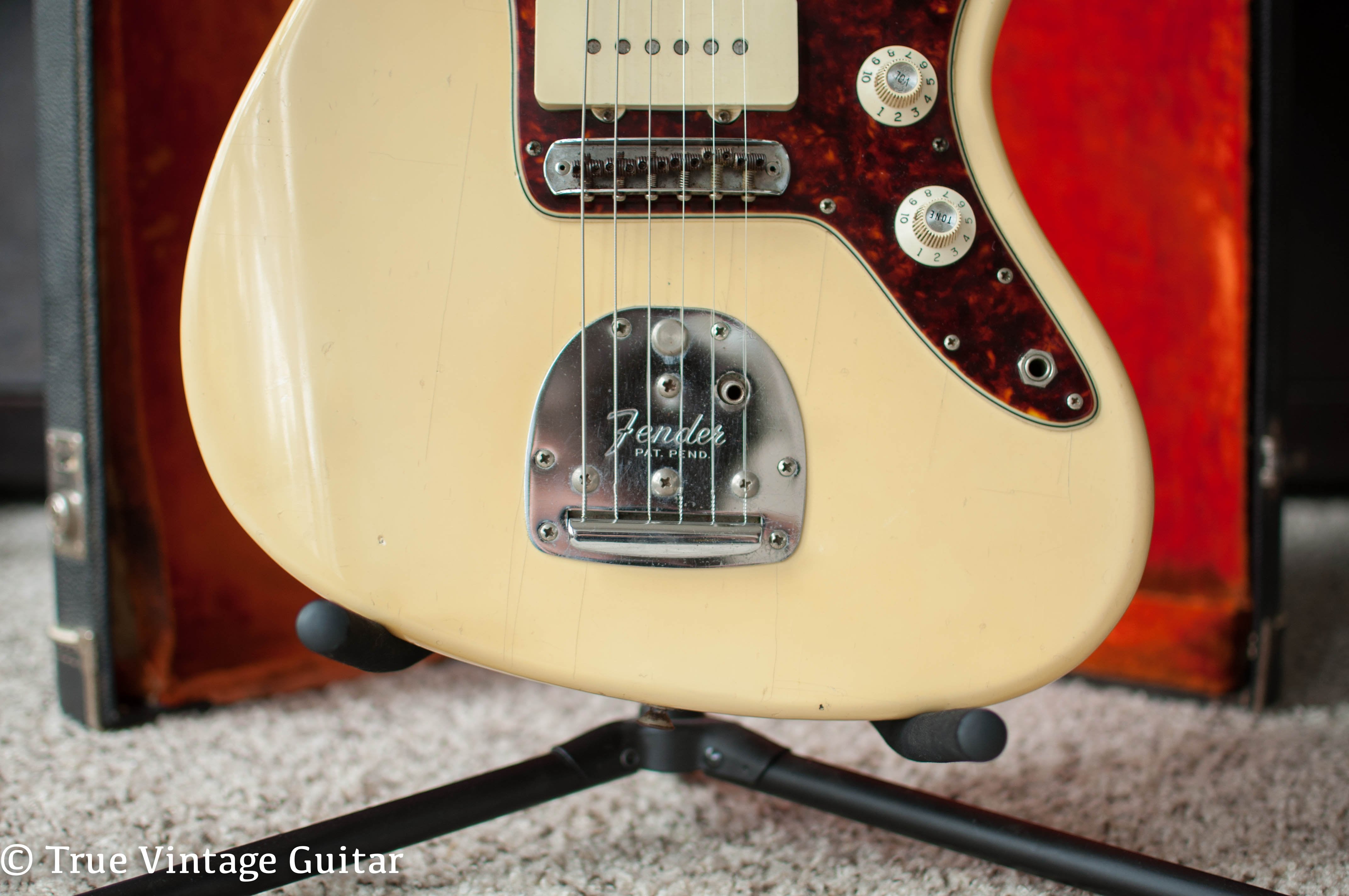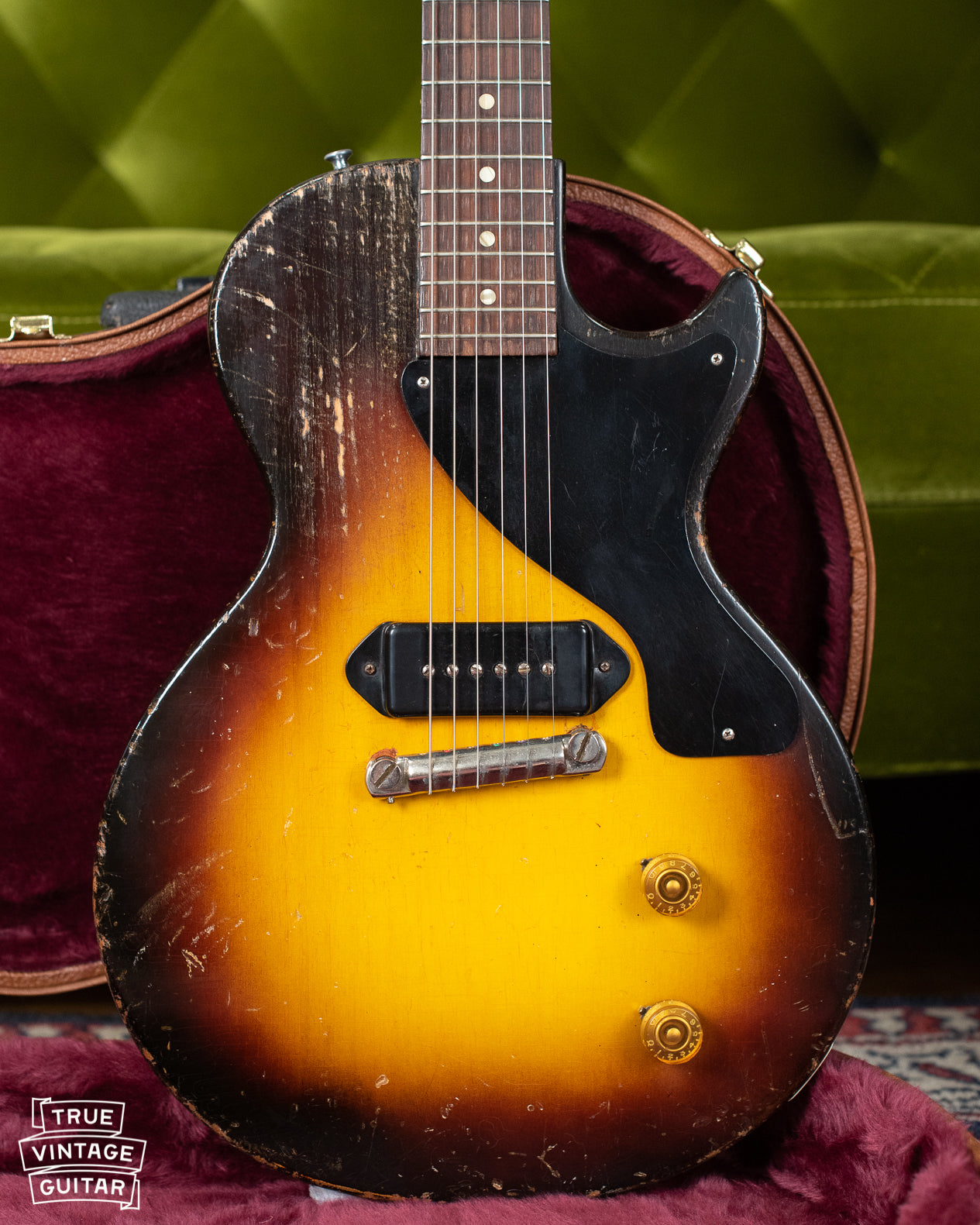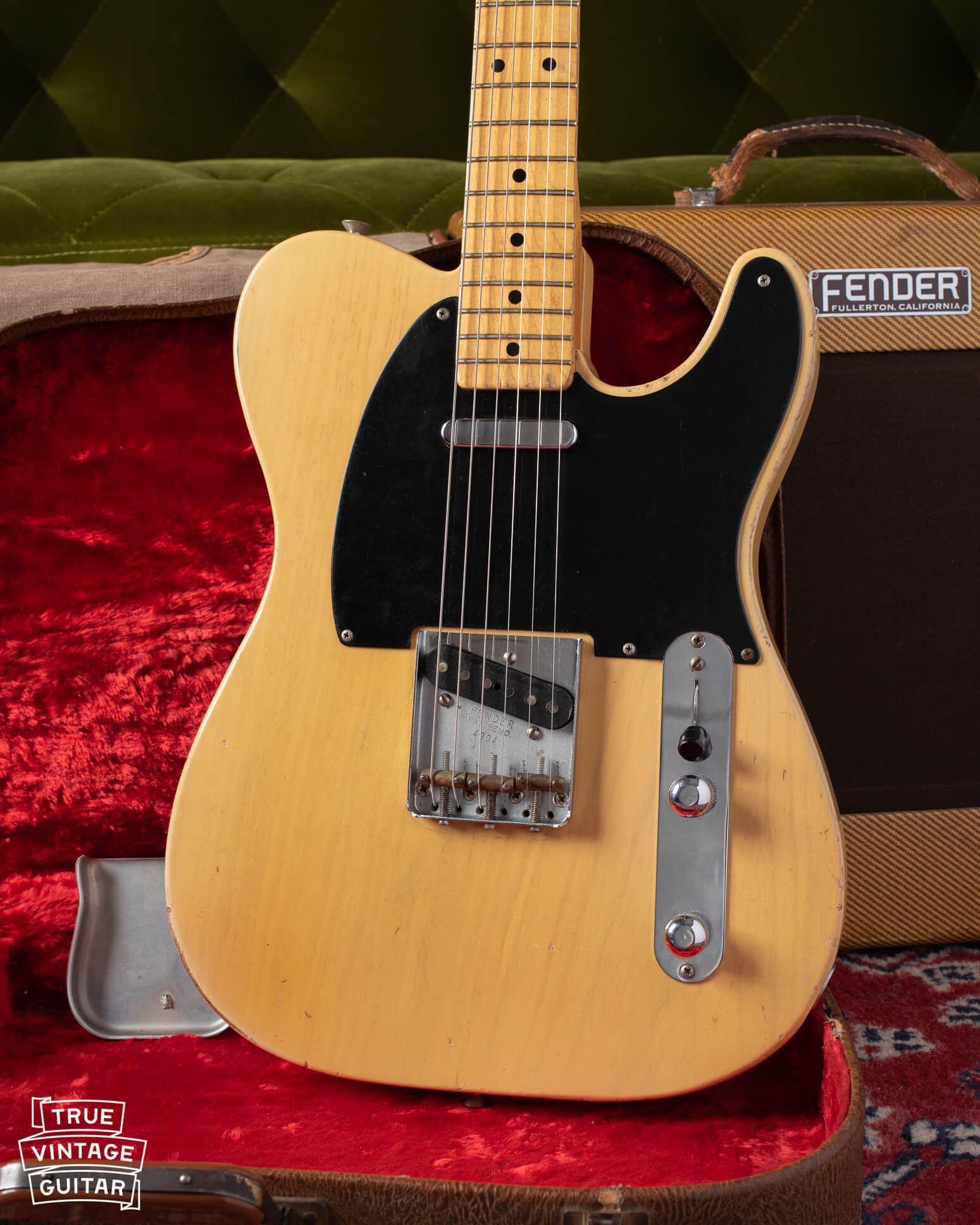Leo Fender introduced a new model with a new offset body design in 1958. The guitar was a radically different design from Fender's Telecaster (1952) and Stratocaster (1954). The Jazzmaster attempted to attract the Jazz players who were more inclined to play a guitar with a much warmer and mellower tone such as an archtop with thick P-90 pickups. Most Jazz players of the time period didn't consider the Jazzmaster a superior instrument for their style so it didn't take hold in that segment of the market. It did, however, become a staple in the Surf music craze of the 1960s. Since then, the Jazzmaster has spanned musical genres to become a very popular Fender model.
 The offset body was an attractive new feature for Fender but that wasn't the only break from tradition. The electronics featured a traditional switching system on the treble side of the guitar that included one volume knob, one tone knob and a three way (Gibson style) switch. The bass side of the strings added a completely separate circuit that allowed for easy switching between two different tonal presets. This circuit included a on/bypass switch, one volume and one tone knob. The bypass switch engaged the bass side circuit which cuts out the bridge pickup completely. The rhythm circuit includes one tone knob, one volume knob, the neck pickup and a capacitor to cut some of the higher frequencies. This system allowed the player to dial in their tone on the standard side of the circuit with both pickups and easily switch to a more bass heavy, jazzy tone with the flip of just one switch.
The offset body was an attractive new feature for Fender but that wasn't the only break from tradition. The electronics featured a traditional switching system on the treble side of the guitar that included one volume knob, one tone knob and a three way (Gibson style) switch. The bass side of the strings added a completely separate circuit that allowed for easy switching between two different tonal presets. This circuit included a on/bypass switch, one volume and one tone knob. The bypass switch engaged the bass side circuit which cuts out the bridge pickup completely. The rhythm circuit includes one tone knob, one volume knob, the neck pickup and a capacitor to cut some of the higher frequencies. This system allowed the player to dial in their tone on the standard side of the circuit with both pickups and easily switch to a more bass heavy, jazzy tone with the flip of just one switch.
 This 1961 Fender Jazzmaster was a fantastic instrument with a few changes made in the late 1960s. It still featured the original Jazzmaster style pickups from 1961 but had some cosmetic changes including the volume and tone knobs, Olympic White refinish, tuners, etc. This guitar was a blast to play and only lasted on the market for a few hours. Do you have a Jazzmaster for sale? I'm looking to buy a Jazzmaster made between 1958 and 1969. I buy vintage guitars! Check my buying page for more information: http://truevintageguitar.com/alabama-vintage-guitar-buyer/
This 1961 Fender Jazzmaster was a fantastic instrument with a few changes made in the late 1960s. It still featured the original Jazzmaster style pickups from 1961 but had some cosmetic changes including the volume and tone knobs, Olympic White refinish, tuners, etc. This guitar was a blast to play and only lasted on the market for a few hours. Do you have a Jazzmaster for sale? I'm looking to buy a Jazzmaster made between 1958 and 1969. I buy vintage guitars! Check my buying page for more information: http://truevintageguitar.com/alabama-vintage-guitar-buyer/
 The offset body was an attractive new feature for Fender but that wasn't the only break from tradition. The electronics featured a traditional switching system on the treble side of the guitar that included one volume knob, one tone knob and a three way (Gibson style) switch. The bass side of the strings added a completely separate circuit that allowed for easy switching between two different tonal presets. This circuit included a on/bypass switch, one volume and one tone knob. The bypass switch engaged the bass side circuit which cuts out the bridge pickup completely. The rhythm circuit includes one tone knob, one volume knob, the neck pickup and a capacitor to cut some of the higher frequencies. This system allowed the player to dial in their tone on the standard side of the circuit with both pickups and easily switch to a more bass heavy, jazzy tone with the flip of just one switch.
The offset body was an attractive new feature for Fender but that wasn't the only break from tradition. The electronics featured a traditional switching system on the treble side of the guitar that included one volume knob, one tone knob and a three way (Gibson style) switch. The bass side of the strings added a completely separate circuit that allowed for easy switching between two different tonal presets. This circuit included a on/bypass switch, one volume and one tone knob. The bypass switch engaged the bass side circuit which cuts out the bridge pickup completely. The rhythm circuit includes one tone knob, one volume knob, the neck pickup and a capacitor to cut some of the higher frequencies. This system allowed the player to dial in their tone on the standard side of the circuit with both pickups and easily switch to a more bass heavy, jazzy tone with the flip of just one switch.
1961 Fender Jazzmaster
 This 1961 Fender Jazzmaster was a fantastic instrument with a few changes made in the late 1960s. It still featured the original Jazzmaster style pickups from 1961 but had some cosmetic changes including the volume and tone knobs, Olympic White refinish, tuners, etc. This guitar was a blast to play and only lasted on the market for a few hours. Do you have a Jazzmaster for sale? I'm looking to buy a Jazzmaster made between 1958 and 1969. I buy vintage guitars! Check my buying page for more information: http://truevintageguitar.com/alabama-vintage-guitar-buyer/
This 1961 Fender Jazzmaster was a fantastic instrument with a few changes made in the late 1960s. It still featured the original Jazzmaster style pickups from 1961 but had some cosmetic changes including the volume and tone knobs, Olympic White refinish, tuners, etc. This guitar was a blast to play and only lasted on the market for a few hours. Do you have a Jazzmaster for sale? I'm looking to buy a Jazzmaster made between 1958 and 1969. I buy vintage guitars! Check my buying page for more information: http://truevintageguitar.com/alabama-vintage-guitar-buyer/



